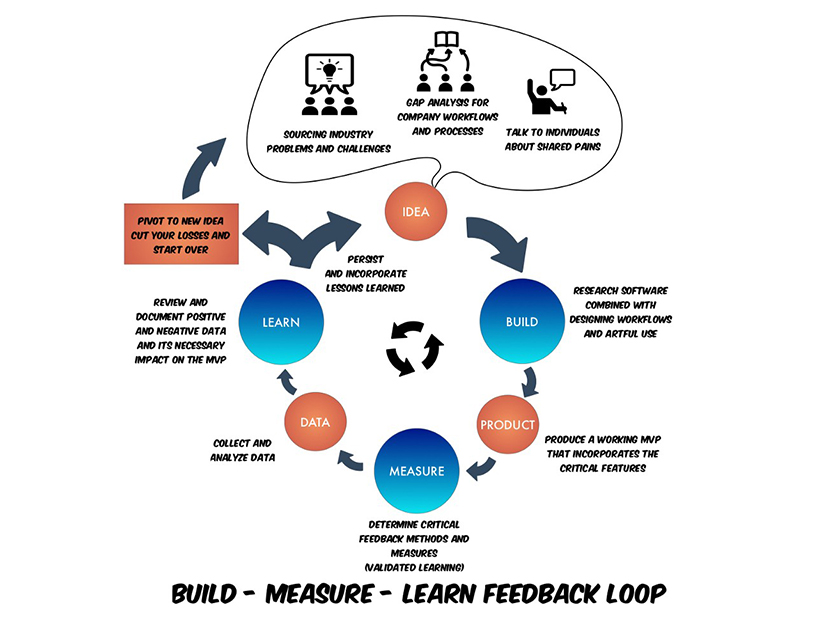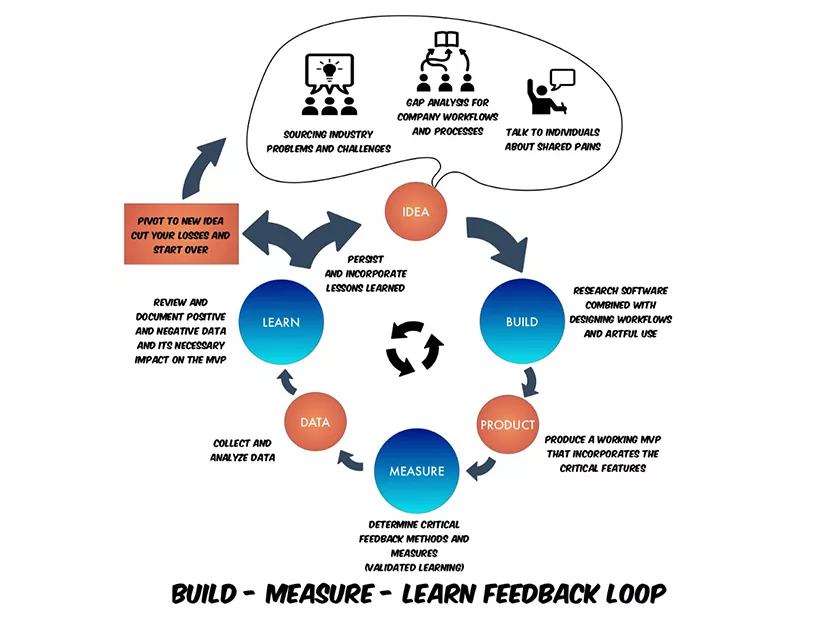About a year ago, I asked Jake Olsen of LINQ to recommend a book to give me a better idea of how tech startups work, knowing that Jake had a background in successful startups and understood the industry as it relates to construction technologies. He recommended Eric Ries’s book “The Lean Startup.” The book opened my eyes to how many parallels exist between tech startups and what we do as construction technologists (CTs). Like most books that are central to a comparable industry, it defined a lot of terminology and provided tips and useful processes that I think we can really benefit from. The book itself espouses an adapted version of lean manufacturing. Basically, it applies lean principles and cultural benefits to the software startup industry. Most significantly, Ries applies a cyclical understanding of continuous improvement to software creation in a way that can be easily adapted to our work in construction technology.
It was, in fact, such a good fit that I now think of CTs within a company as more of an internal tech startup. Functionally, the similarities are overwhelming. Our goals are to produce useful, effective technology for our customers, but in our case that customer is our own business. The success of Ries’s approach has led to countless successes in the tech industry and has made his book almost required reading for new tech startups.
Lean is not at all new to construction. We have applied lean methodology from manufacturing to our fab shop, jobsites, and buildings, and have seen great improvements. However, when it comes to construction technology within an organization, I think that the lean-focused should favor the tech startup model over the manufacturing model. This is particularly relevant when it comes to financing CTs' endeavors within organizations. It is very hard to fund new and emergent technology through an ROI evaluation because there is not always a traditional return on investment. Reis argues that to be effective at tech innovation you cannot rely on successful implementation of every new technology. Reis explains in his book that we need to accept that learning, knowledge, and understanding have a measurable value to our companies and can provide returns beyond the immediate implementation of a technology by guiding us to better alternatives or helping us adapt technology to better fit our needs. So for CTs, we need to follow a model that can allow us to assign a value to the work we're doing and track progress, but that does not always rely on the success of any individual tech introduction. For a tech startup, this evaluation is done by measuring success using something called validated learning.
Validated learning is part of a process that Ries refers to as the “build-measure-learn feedback loop.” This process is my biggest takeaway from the book. It defines a process that I think can be adapted easily to the CT within an organization, specifically a CT who is not working on building software for the industry but is working within a company to build its portfolio of technology.
The graphic below shows my version of the feedback loop modified just slightly to describe its use in construction technology.

This blog originally appeared on www.medium.com. Follow this link to continue reading.




